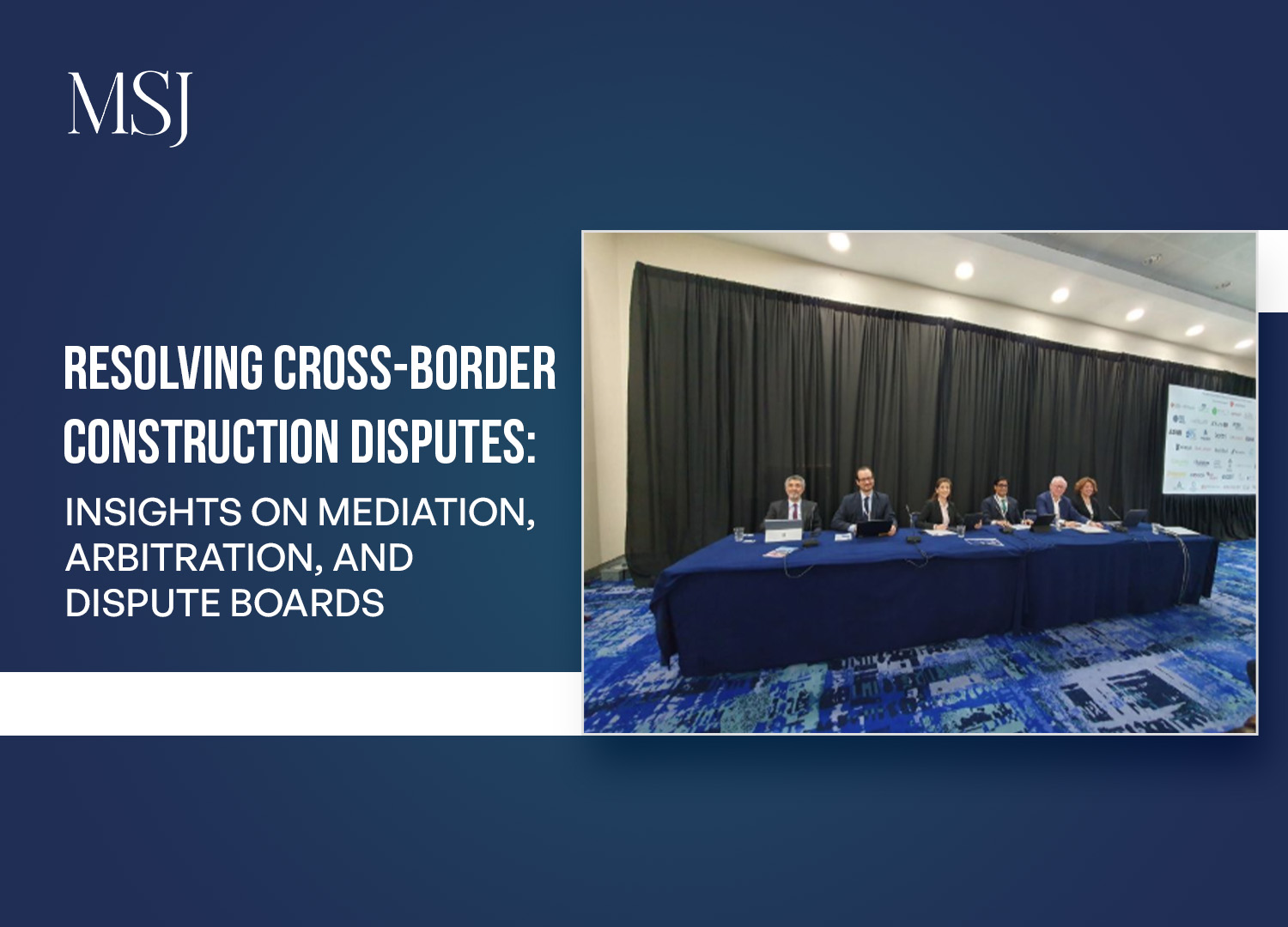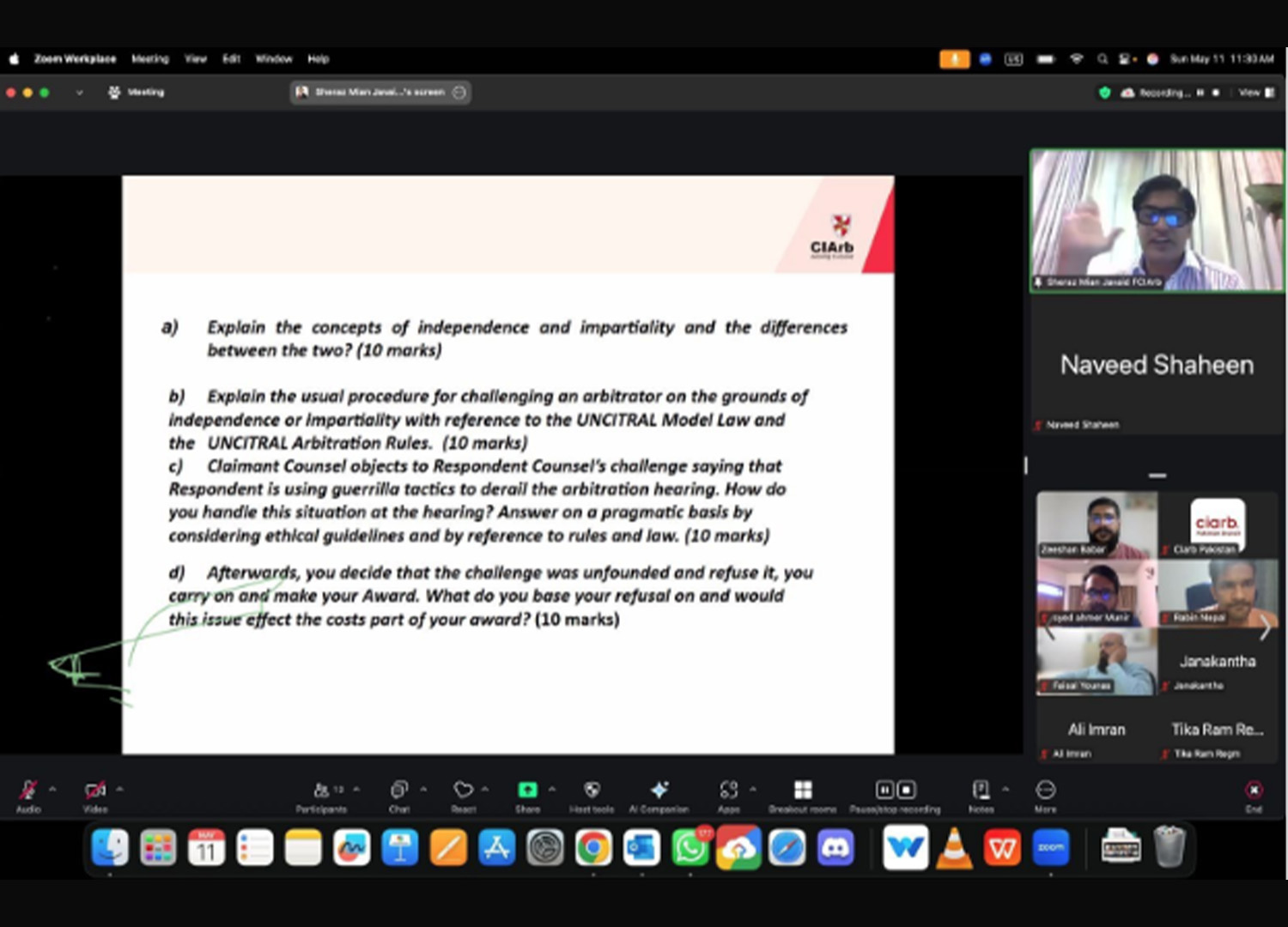Introduction to Construction Dispute Resolution in China
Mian Sheraz Javaid delivered a comprehensive and insightful presentation on Construction Dispute Resolution in China during the 2023 Hong Kong Summit on Commercial Dispute Resolution in China co-organized by the Beijing Arbitration Commission/Beijing International Arbitration Court.
The presentation was primarily focused on recent trends, legal reforms, and dispute resolution mechanisms in China’s booming construction industry, with particular attention to the implications of the Annual Review on Construction Disputes and recent legal developments.
Acknowledging Previous Insights
Mian Sheraz Javaid started with appreciation for the informative presentation delivered by Mr. Jun Cui, which offered a broad view of the Annual Review of Construction Dispute Resolution in China. This review has become an important resource for both domestic and foreign industry professionals to gain insight into trends, developments, and changes in the legal landscape, including crucial updates from the Supreme People's Court (SPC). Mr. Jun Cui opened a speech about construction contract disputes concerning the judicial interpretation with comments mainly related to deeper and better performance by China.
Trends in the Chinese Construction Industry
He argued that the infrastructure sector in China has experienced some significant growth driven by several things. These encompass government policies that have encouraged much investment in heavy infrastructure and now a more workable dispute resolution system. They have been behind the industry performing well and getting contracts facilitated seamlessly. The various ADR tools have created better conditions for having construction contracts signed, and since there is increased efficiency in cases of disputes avoided, construction takes place more promptly.
Trends in Construction Disputes
However, the presentation also revealed that, although the sector is growing, construction disputes reached their peak in 2020 because of the difficulties that the COVID-19 pandemic caused. According to Sheraz, these were primarily delays, increased costs, and suspensions because of citywide lockdowns, and the subsequent prohibition of early work resumption. Construction, being labor-intensive and material-dependent, was more affected, as it not only impacted the timelines of the project but also the costs.
Despite the surge in disputes during the initial period in 2020, Sheraz was able to report that the decline was gradual afterwards. One primary reason for the reduction was that China recovered pretty rapidly from the pandemic, showing an increase of 3.5% growth in construction during 2020, and further projection to grow 7.7% in 2021. The rapid fast-tracking of the main infrastructure projects directly contributed to this stabilization process, according to Sheraz.
Key Causes of Construction Disputes
Sheraz explained that one of the most common issues in construction disputes is within the construction contracts themselves. The issues arise from complex projects, contractual non-compliance, changing conditions, and final payment disputes. The pandemic worsened the situation, especially on final payments, as most contractors were facing problems in receiving their final payments because of the suspension of works.
Final payment disputes, particularly on matters of substantial completion, retainage, and payments, are rife in construction contracts. The speaker pointed out how COVID-19 complicated the situation as it further compounded the disputes by halting project schedules, leaving some contractors and subcontractors unable to meet their respective obligations within stipulated contract provisions.
The Legal Landscape and Its Impact on Disputes
A very significant part of Sheraz’s presentation was related to recent developments in Chinese law that have changed the face of construction disputes and their resolution. The most remarkable development is the Civil Code of China, effective from January 1, 2021. It is a first-of-its-kind code in Chinese law, which will consolidate all other laws and principles into one codified framework.
Another aspect is that the new Civil Procedure Law, effective January 1, 2024, amends various aspects including jurisdiction over foreign defendants, internationally parallel litigation, and collection of evidence. The impact on how civil disputes, construction contract disputes in particular, will be processed and determined is enormous in making such procedures more predictable and clearer in resolution.
Other major legal developments have been the Judicial Interpretation on Construction Contracts. The first interpretation, which went into effect on January 1, 2021, clarified important matters of construction contract disputes, including contract enforcement and venue choice in contractual actions. The second interpretation is going to further sharpen this area of law and help increase legal certainty in construction contract enforcement.
Judicial Interpretations and Their Role
This is followed by detailed discussions on judicial interpretations in China. Sheraz further draws from the Annual Review on Construction Disputes and finds out that the supreme court judicial interpretation has no lawmaking power; hence, the decisions of the Supreme Court judicial interpretation are not law but more like references valued by arbitral tribunals while applying Chinese law in cases involving international arbitration. These interpretations assist arbitral tribunals in the resolution of unclear issues in Chinese law, such that arbitral awards are aligned with the dominant judicial trends and practices.
Proactive Measures in Construction Disputes
On declining disputes in construction, Sheraz also pointed toward the growing utilization of Dispute Adjudication Boards (DAB), Dispute Avoidance Boards (DB), and Dispute Avoidance and Adjudication Boards (DAAB) under international standards such as FIDIC contracts. These play an essential role in pre-arbitration situations, enabling the parties to reach a solution even before it rises up to be presented in court in the form of litigation or even arbitration.
The importance of these boards has particularly gained prominence in Chinese construction projects, especially where foreign contractors are involved. FIDIC contracts have been incorporated in China's international construction contracts. Today, the same contracts are framed to incorporate the boards at the very inception of the project to ensure constant intervention in managing and resolving issues in advance.
Case Studies and Force Majeure in Construction
Sheraz, during his presentation, analyzed the key cases that have confronted the courts on COVID-19 and its qualification as a force majeure event. He noted that COVID-19 caused extreme disturbances in the construction activities, although some parties tried to terminate contracts based on force majeure claims, with legal scrutiny being extremely intense. The Annual Review states that in order to qualify as force majeure, it is required to demonstrate that the pandemic made the contract objectives impossible. A legal review of these claims demonstrated that most of them did not meet the strict requirements for termination since the disruption was not of a nature that would be substantial enough to amount to frustration of a contract.
The Role of Dispute Review Boards (DRBs) in China
Another important aspect of construction dispute resolution in China relates to the past use of DRBs. According to Sheraz, in the 1990s, China adopted the use of DRBs, starting with the high-profile Ertan project located in Sichuan Province for large international projects. DRBs have been proved to be helpful in the timely resolution of disputes, and thereby, the schedules of projects may be maintained intact.
DRBs today are very crucial in construction projects, and the updates on dispute resolution rules, including those adopted by CIETAC and Beijing Arbitration Commission (BAC), incorporate specialized rules for construction disputes, which promote efficient dispute resolution through proactive mechanisms such as Dispute Review Boards and Dispute Adjudication Boards.
Conclusion
In a nutshell, Sheraz summarized the growing importance of proactive dispute resolution mechanisms and legal reforms in China. These changes are aimed at creating a more predictable, efficient, and internationally compliant environment for the construction industry. This role will continue to be important as China continues to innovate and modernize its legal framework, thereby reducing the number of disputes and ensuring their efficient resolution, which would pave the way for smoother delivery of construction projects and international cooperation.











